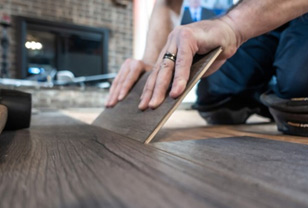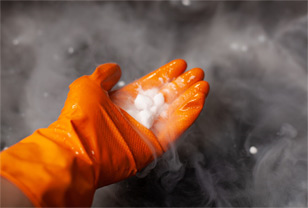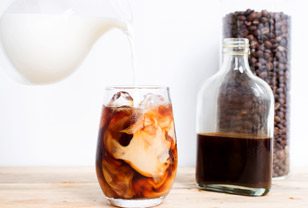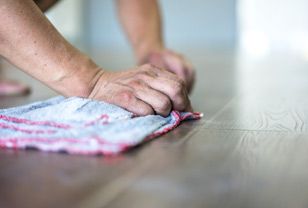How to Clean Discolored Vinyl Flooring Safely and Effectively
However, the change in color, yellow in particular, is a huge problem for many people. Their vinyl floors tend to fade over time, even when they keep a regular maintenance routine. The only solution is to know how to clean discolored vinyl flooring. Find it a bit difficult? We have you covered.
Causes Of Discolored Vinyl Flooring
Your vinyl flooring can become discolored and turn yellow for various reasons. Most of them are due to the interaction between linoleum - the primary ingredient of vinyl flooring - and the outside elements.
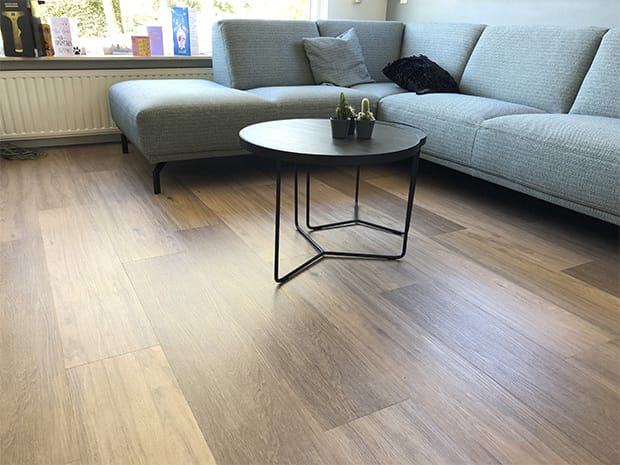
The discoloration is a common problem for vinyl flooring.
Even when not in use, yellowing is just a natural tendency of linoleum that has been laid out for a long time. It tends to oxidize over time - a serious downside of this awesome flooring material.
There are many factors that can accelerate this process and make yellow spots appear sooner.
Moisture
Trapped moisture can do a lot of harm to vinyl flooring, which happens when the wrong substrate has been chosen, or it isn't installed properly. As a result, no moisture barrier can protect your floors.
Water and other liquids can seep through the topcoat of vinyl flooring, going deep into the lower layers and damaging the entire floor from underneath.
The visible result is a difference in color between the dry areas and where the moisture has been trapped.
Mildew And Mold
Mildew and mold can grow quickly in the affected area if it is exposed to water regularly or it isn't moisture-proof enough.
The existence of those fungi causes contamination, which changes the color of the floor. The discoloration occurs at a significant rate if you don't remove the mildew and mold when they first appear.
The best way to avoid this issue is to adopt suitable methods to prevent infestation of mildew and mold in your vinyl flooring.
Incorrectly Applied Adhesives
Manufacturers of vinyl flooring typically recommend a type of adhesive that should be used in conjunction with their products, including the proper installation method.
When you ignore this and pick the wrong adhesive or apply it improperly, the adhesive may lose some of its protective function, and your vinyl flooring will get damaged as a result.
Grime, dirt, and oil can migrate into the inside layers and eventually show up as yellow spots on the surface.
Chemical Reactions
When coming into contact with some rubber materials, there are reactions between them and vinyl flooring, leading to discoloration.
This happens more often in day-to-day life than you might think. For instance, when you lift furniture with rubberized wheels or rubber-backed rugs, you may notice some yellow spots on your vinyl flooring. They are the result when the rubber has been left directly on the vinyl for a long time.
This kind of discoloration is a serious problem because it's hard for you to discover them. It may take you months or even years to see the change of color.
But when you're aware of this, the problem can be easily avoided. Just change the position of your rubber-backed furniture and appliances or avoid them altogether.
Sunlight
Yellow spots of vinyl flooring may also come from exposure to the sun. Areas that receive a lot of sunlight during the day can be subjected to high temperatures on a regular basis, which can fade the color of those spots.
Windows and patio doors are common places you need to pay attention to. You may also notice discoloration around your fireplace due to the constant high heat it produces.
Hot Water
Sometimes, your well-intended car can do more harm than good. Hot water and cleaning products that contain alkalinity can discolor linoleum by eating away the protective coatings of your vinyl flooring.
Make sure you follow the recommendations of the manufacturer and pick the correct products for your flooring.
How To Clean Discolored Vinyl Flooring
There are many ways to get yellow spots off your vinyl flooring, all with some items commonly found in many households. These methods basically teach you how to clean discolored linoleum as it’s the core ingredient of vinyl flooring.
You can get these ingredients on your hands easily. And they can produce amazing results, not only against yellowing on your vinyl flooring but also other types of stains.
Dish Soap
Dish soap is always the first thing you should have in mind when it comes to cleaning yellowed vinyl floors. It's widely available, easy to use, and isn't harmful to your health.
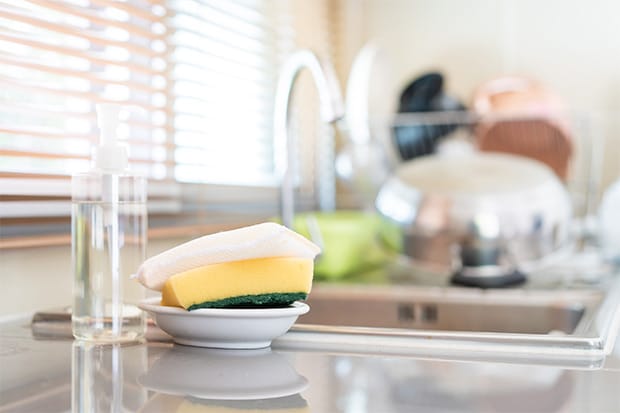
Dish soap can work wonders.
This detergent typically has a neutral pH level, allowing it to remove discoloration and stubborn stains from your floors safely. Even if it doesn't work, dish soap doesn't dull or damage the flooring.
Also, because of this gentle action, it's a preferred cleaning method recommended by many manufacturers for their flooring products over more aggressive options, such as acidic and alkaline cleaners.
On top of that, mixing warm water and dish soap is exactly how you clean your dishes anyway, so you don't need extra equipment or preparation.
Mix one cup of warm water with 1/4 teaspoon of dish soap and spray the solution to the affected areas of your vinyl flooring. Get the Best Mop for Vinyl Floors and mop the floor, then wipe it up with a dry cloth.
Bleach
Bleach is a top choice for many cleaning applications. You can find it in any store, and stocking it in your house offers you an amazing tool for several general cleaning purposes.
Unlike dish soap, the mixture of bleach and water is an alkaline solution. It can come to the rescue and get rid of discoloration and stubborn grease when the neutral dish soap solution can't get the job done.
Remember that due to this highly alkaline nature, bleach can dull some vinyl flooring products. Many manufacturers use this chemical as a solution only for removing stains.
Using it once in a while is totally safe. But avoid letting your flooring come into contact with bleach too often. This is also the reason it's best to dilute bleach before cleaning.
Also, ensure that you rinse the bleach solution from your flooring thoroughly. The residue that is allowed to dry on the vinyl can lead to serious problems.
You can use a bucket to make this solution. Wearing gloves is recommended.
Pour in ten parts of water for each part of bleach. The amount of the solution depends on the area you want to fix the discoloration.
Rub the solution against the affected areas. Use clean water to mop and rinse them immediately after. Dry the floor with a clean cloth.
Increase the bleach portion if you aren't satisfied with the result and repeat. Your vinyl flooring may need several treatments before the yellow spots disappear completely.
Lemon And Soda
Lemons can remove stains, just like the way they can lighten your hair and skin. This DIY method isn't straightforward like common cleaners, but it isn't hard to follow either.
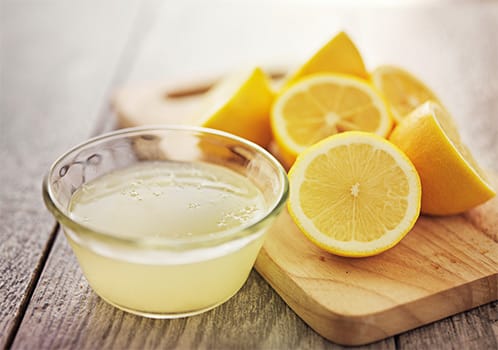
Lemon juice is another option.
The citric acid in lemon juice is a non-toxic antiseptic and antibacterial that is used in many commercial products. It does a great job of removing urine, water stains, discoloration, and tea or coffee stains.
Just mix one part of baking soda with two parts of lemon juice. Wait for the baking soda to dissolve and turn into paste-like, then spread it over the discolored vinyl flooring.
The correct consistency is very important here, so make sure you don't rush and allow for the dissolution of the baking soda.
Let the pate sit there for about 15 minutes before you wipe it up with a towel or damp cloth.
Rubbing Alcohol
Consider rubbing alcohol if the above methods don't work to get rid of yellow spots on your vinyl flooring. This is a clear liquid that is commonly used as a volatile solvent for cleaning.
The big advantage of this method is that it doesn't leave any residue, meaning your vinyl flooring will dry almost immediately after the treatment. You don't need to rinse it to prevent a film from forming like other cleaners.
Rubbing alcohol is an excellent way to get rid of scuff marks and tough stains from vinyl flooring.
Make sure that you have removed dirt and other debris from the surface first. Pour some rubbing alcohol (70% or 99% isopropyl alcohol) on the contaminated area.
Use a cloth and rub it against the spots in a circular motion until they start to fade. If you don't notice a big change in color, add more rubbing alcohol to the area and repeat rubbing. Dry the flooring with a dry mop.
Cream Of Tartar
Despite its name, cream of tartar isn't creamy at all. This white powder is a mild acid salt with a lot of uses in baking recipes.
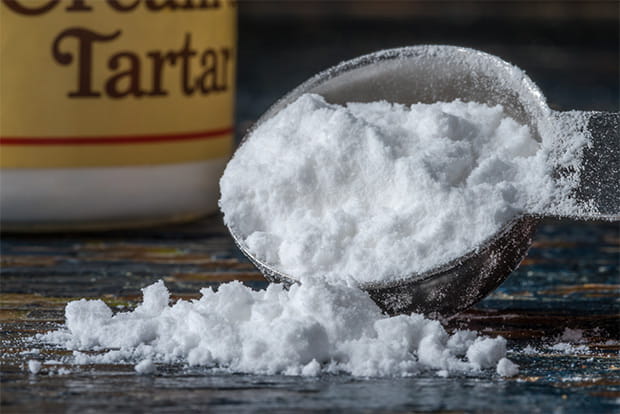
Some cream of tartar can help too.
But you can create a paste of cream of tartar with water to create several materials as well - an application that might surprise many people. Coffee machines, rust stains, copper, and brass are among the places you utilize this powder.
Cream of tartar works on vinyl flooring in the way lemon juice does. The biggest hassle is the residue left behind, which will require you to rinse the flooring thoroughly.
After creating a thick paste with some drops of water, rub it on the discolored area and wait for half an hour. Clean the paste with a damp sponge and rinse the surface with a mop. Finally, dry the vinyl flooring with a dry mop or cloth.
How To Prevent Discoloration Of Vinyl Flooring
Discoloration may happen in an inevitable way. But many things can be done so you can slow down the process and keep your vinyl flooring in good condition as long as possible.
Change The Position Of Your Rugs And Furniture Often
As we have mentioned, when the rubber feet of your furniture stay in a single place for too long, they can fade the color of that area.
You can avoid this by moving it to another place so your vinyl flooring can have a chance to revert back to its original color (if it enjoys enough exposure to air and light). Don't overdo it, or you may see sun damage instead.
Use Proper Window Coverings
Too much sunlight is one of the most common reasons for the discoloration of vinyl flooring. Window coverings are a wise investment to prevent this.
With a small amount of money, you can avoid those sunspots, which are basically permanent discoloration. If you decide to pass this and save money at the moment, you might need to remove and replace the whole flooring when the yellowing gets beyond repair.
Keep the doors and windows closed when the sun is shining brightly and use good window coverings to minimize the harmful effects of UV rays. You can consider awnings to bring the level of protection further.
Clean The Subfloor During Installation
Adhesive plays a massive role in protecting the assembly of vinyl planks or tiles. The wrong type of adhesive can make discoloration happen more quickly, and so does the residue of adhesive when you remove the previous installation.
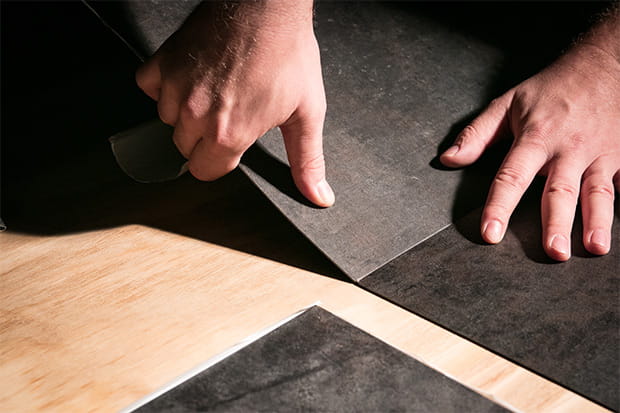
Remove the old adhesive completely.
Make sure to scrape off the adhesive thoroughly when installing new vinyl flooring. Otherwise, it can lead to uneven floors and expose the vinyl to extra moisture. The new adhesive may also react with the residues to form yellow spots.
Going through the specifications provided by the manufacturer and only using the adhesive that it recommends.
Use Suitable Cleaners
Many commercial cleaning products are available on the market. And there are numerous DIY solutions you can learn to make at home as well.
However, not every one of them is designed to work with vinyl flooring. Some of them may not work at all or even cause damage to your vinyl flooring, such as fading its color.
Use The Right Cleaning Techniques
Learning how to clean vinyl floors properly and integrating it into your schedule doesn't just remove yellow spots safely but can also avoid a whole host of other problems with your vinyl flooring.
There are many tools you should have in your house to keep it in good order. Considering the best robot vacuum for vinyl plank floors is a good recommendation, for instance.
Conclusion
Vinyl is still the go-to choice for those in need of the ability to resist stains and moisture. However, this resilient flooring is prone to discoloration. It may be discouraging when you find out about the yellow spots on your floors. But don't worry. Have a look at the methods above and learn how to clean discolored vinyl flooring to make them go away.






